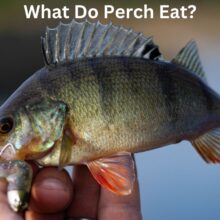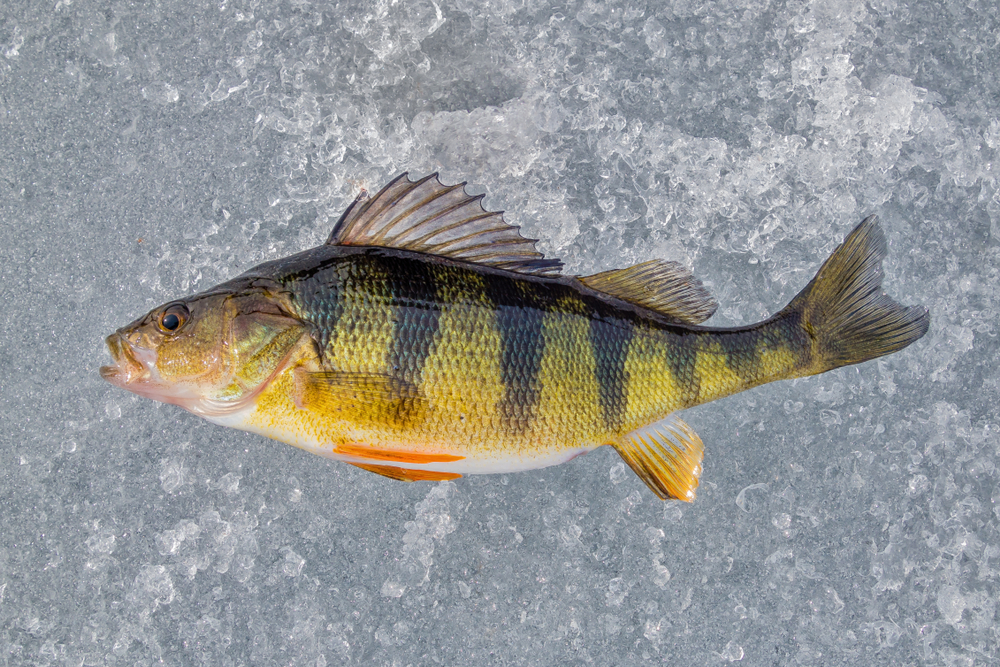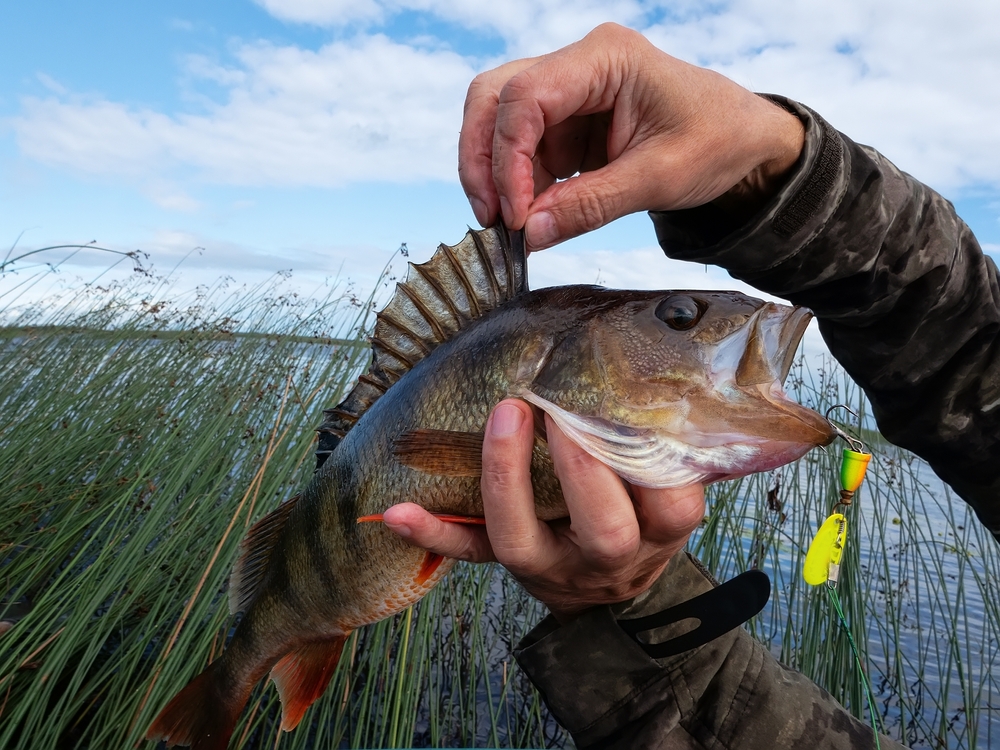This article may contain affiliate links. If you make a purchase after clicking on a link we may earn a small commission at no extra cost to you. As an Amazon Associate, I earn from qualifying purchases.
What Do Perch Eat?

Perch are a popular freshwater fish found in many bodies of water around the world. They are known for their fighting spirit and tasty fillets, making them a popular target for anglers.
Knowing what perch eat is essential for successful fishing, as it helps to understand their behavior and feeding habits.
In this article, we will explore the natural diet of perch, as well as the best baits and lures to use when targeting these fish. Additionally, we will discuss different techniques for catching perch and provide tips for a successful fishing trip.
What Do Perch Eat?
- Small Fish
- Insects
- Crustaceans
- Worms
- Leeches
Natural Diet of Perch
Perch are opportunistic feeders that consume a wide variety of prey. They are known to feed both near the surface and on the bottom of the water column, depending on the availability of food.

The natural diet of perch varies depending on their size and location, but some common prey species include:
- Insects: Perch consume a variety of insects, including beetles, mayflies, and dragonflies. They often feed on the surface of the water where insects are more abundant.
- Small Fish: Young perch feed primarily on small fish, such as minnows and shad. As they grow larger, they may consume larger fish species.
- Crustaceans: Perch are known to feed on crayfish and other crustaceans found in the water.
- Worms and Other Aquatic Invertebrates: Perch are also known to feed on worms and other aquatic invertebrates, such as snails and clams.
When targeting perch, it is important to consider the natural diet of these fish and use bait or lures that mimic their prey. By doing so, you increase your chances of a successful fishing trip.
Artificial Baits and Lures for Perch
Artificial baits and lures are a popular choice for catching perch, and there are several options available that mimic the natural prey of these fish.
Here are some of the best types of artificial baits and lures for perch fishing:
- Jigs: Jigs are a versatile option that can be fished vertically or horizontally. They come in various sizes and colors, and can mimic both insects and small fish.
- Soft Plastic Baits: Soft plastic baits, such as worms and grubs, are effective for catching perch. They come in a variety of colors and sizes, and can be rigged in several ways.
- Spinners: Spinners are another popular choice for catching perch. They are available in different sizes and colors, and create a vibration and flash that can attract fish.
- Crankbaits: Crankbaits are effective for targeting larger perch, as they can mimic small fish and create a realistic swimming motion.

When using artificial baits and lures for perch fishing, it is important to consider the water conditions and adjust your approach accordingly.
Slow and steady retrieves are often effective, but it may be necessary to vary the speed or depth of your bait or lure to entice a strike.
Live Baits for Perch
Live bait is another effective option for targeting perch, and there are several types of live bait that are commonly used by anglers. Here are some of the best live baits for perch fishing:
- Minnows: Minnows are a popular live bait for catching perch. They can be fished on a hook or used with a small jig or spinner.
- Worms: Worms are another effective live bait for perch. They can be used on a hook or jig, and are available at most fishing supply stores.
- Crayfish: Crayfish are a natural prey of perch and can be used as live bait. They are typically fished on a hook or jig and are most effective in areas where crayfish are abundant.
When using live bait for perch fishing, it is important to use the right size and species of bait to match the natural prey of the fish. It is also important to keep the bait lively and active, as this can help attract fish.
Live bait can be fished on a variety of rigs, including Carolina rigs, slip bobber rigs, and bottom rigs. Experimenting with different rigs and techniques can help you find the most effective approach for your specific fishing location.
Techniques for Catching Perch
There are several techniques that can be used for catching perch, depending on the location and water conditions. Here are some of the most effective techniques for catching perch:
- Still Fishing: Still fishing involves using a stationary bait or lure and waiting for fish to bite. This technique is effective in areas with slow-moving water or where perch are concentrated in a particular spot.
- Drifting: Drifting involves allowing your bait or lure to drift with the current, typically using a float or bobber to keep it at a specific depth. This technique can be effective in areas with faster-moving water or when targeting fish that are scattered throughout the water column.
- Jigging: Jigging involves using a vertical jig or lure and moving it up and down to attract fish. This technique can be effective for catching fish that are suspended in the water column.
- Trolling: Trolling involves dragging a bait or lure behind a boat at a slow speed. This technique can be effective for covering a large area and finding actively feeding fish.
When using any of these techniques, it is important to pay attention to the behavior of the fish and adjust your approach accordingly. Perch may be more active during certain times of the day or in specific water conditions, so experimenting with different techniques and baits can help you find the most effective approach.
Conclusion
Knowing what perch eat is essential for successful fishing. Perch are opportunistic feeders that consume a variety of prey, including insects, small fish, crustaceans, and worms.
When targeting perch, anglers can use a variety of baits and lures, including jigs, soft plastic baits, spinners, crankbaits, minnows, worms, and crayfish. Different fishing techniques can also be employed, such as still fishing, drifting, jigging, and trolling.
By understanding the natural diet and behavior of perch, and experimenting with different baits and techniques, anglers can increase their chances of a successful fishing trip.
